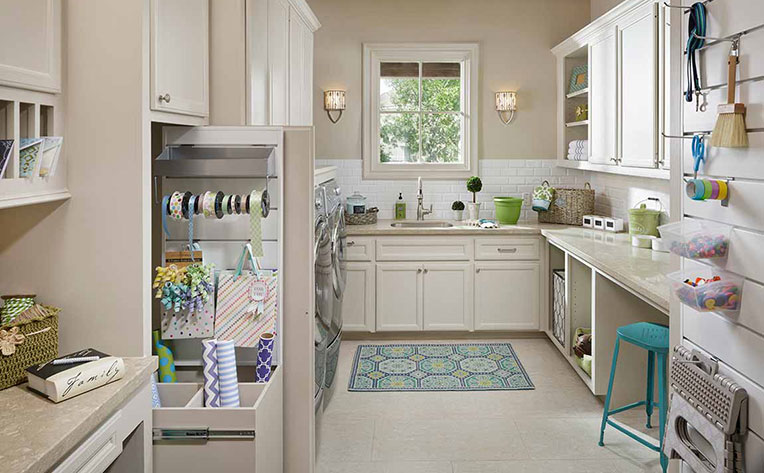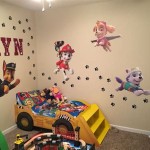Small Space Decorating Ideas: Maximizing Kitchen Functionality and Style
Designing a small kitchen presents unique challenges. Space is a premium, requiring careful consideration of every element, from storage solutions to appliance placement. The goal is to create a functional and aesthetically pleasing environment that maximizes efficiency without sacrificing style. Effective small space decorating involves strategic planning, clever organization, and a curated selection of design features.
This article explores a range of small space decorating ideas tailored specifically for kitchens. It examines various strategies to optimize space, enhance functionality, and create a visually appealing environment, even within limited square footage. By implementing these techniques, individuals can transform a cramped and cluttered kitchen into a well-organized and inviting culinary space.
Vertical Storage Solutions: Expanding Space Upwards
Vertical storage is a cornerstone of small kitchen design. When floor space is limited, utilizing wall space becomes paramount. This involves exploring various methods to extend storage upwards, maximizing the available vertical dimension. Shelving is one of the most effective and versatile solutions. Open shelving, in particular, creates a sense of openness and allows for easy access to frequently used items. Opting for shelves that extend all the way to the ceiling can maximize storage capacity.
Consider the material of the shelving to align with the kitchen's overall aesthetic. Wood shelves offer a warm and rustic feel, while metal shelves provide a modern and industrial touch. Floating shelves create a clean and minimalist look, blending seamlessly into the wall. The spacing between shelves should be carefully considered to accommodate items of varying heights.
Cabinets are another crucial component of vertical storage. Tall, narrow cabinets are ideal for storing pantry items or kitchen appliances. Installing cabinets that reach the ceiling maximizes storage potential and minimizes wasted space above. Consider incorporating pull-out shelves or drawers within cabinets to improve accessibility and organization. Corner cabinets, often underutilized, can be equipped with lazy Susans or pull-out organizers to make them more functional.
Beyond shelves and cabinets, wall-mounted organizers can further enhance vertical storage. Magnetic knife strips keep knives safely and conveniently within reach. Pot racks hung from the ceiling or mounted on the wall provide a space-saving solution for storing cookware. Spice racks mounted on the inside of cabinet doors free up valuable counter space. Pegboards offer a customizable storage solution for utensils and other kitchen tools, allowing for flexible organization and easy access.
When implementing vertical storage, it's essential to maintain a sense of balance and avoid overcrowding. Leave adequate space between shelves and cabinets to prevent the kitchen from feeling cramped. Choose a cohesive color palette for the shelves and cabinets to create a visually unified space. Regularly decluttering and organizing vertical storage areas will ensure that they remain functional and aesthetically pleasing.
Optimizing Counter Space: Multifunctional Surfaces and Smart Appliances
Counter space is a precious commodity in any kitchen, especially in small spaces. Maximizing its utility requires careful planning and strategic choices. One effective approach is to incorporate multifunctional surfaces that can serve multiple purposes. A kitchen island, for instance, can provide additional counter space for food preparation, a dining area for casual meals, and storage space within its base. A butcher block countertop can serve as both a cutting board and a work surface, saving space and streamlining food preparation.
Folding or drop-leaf countertops are another excellent option for small kitchens. These surfaces can be extended when needed for extra workspace and folded away when not in use, freeing up valuable floor space. A bar-height counter with stools can function as both a dining area and a workspace, offering a versatile solution for small kitchens with limited seating options. When choosing countertop materials, consider durability, ease of maintenance, and aesthetic appeal. Quartz and granite are popular choices due to their durability and resistance to scratches and stains.
Smart appliance choices play a critical role in optimizing counter space. Opting for smaller, more compact appliances can free up valuable workspace. A countertop convection oven can replace a full-sized oven for smaller households or occasional baking needs. A compact dishwasher can save space compared to a standard-sized dishwasher. A built-in microwave can free up counter space while providing convenient cooking options.
Consider appliances with multiple functions to further optimize space. A combination microwave and convection oven can perform the tasks of two separate appliances. An induction cooktop with built-in downdraft ventilation eliminates the need for a separate range hood, freeing up wall space. Choose appliances with sleek and streamlined designs to minimize their visual impact on the kitchen.
Maintaining a clutter-free countertop is essential for maximizing its usability. Store small appliances and kitchen tools in cabinets or drawers when not in use. Use countertop organizers to keep frequently used items within reach while maintaining a tidy appearance. Regularly decluttering the countertop will prevent it from becoming a dumping ground for miscellaneous items and ensure that it remains a functional and aesthetically pleasing workspace.
Light and Color: Creating an Illusion of Spaciousness
Light and color are powerful tools for transforming a small kitchen and creating an illusion of spaciousness. Light colors tend to reflect more light, making a room feel brighter and more open. White, cream, and light gray are popular choices for small kitchens, as they create a clean and airy atmosphere. Incorporating pops of color through accessories, such as dishware, textiles, or artwork, can add visual interest without overwhelming the space.
Dark colors, on the other hand, can make a room feel smaller and more enclosed. However, dark colors can be used strategically to create a sense of depth and dimension. For example, painting the lower cabinets in a dark color and the upper cabinets in a light color can create a visually balanced and sophisticated look. Accent walls in bold colors can add a focal point to the kitchen without making it feel cramped.
Natural light is the most effective way to brighten a small kitchen and create a sense of spaciousness. Maximize natural light by keeping windows clean and free of obstructions. Avoid heavy curtains or blinds that block natural light. Consider installing sheer curtains or blinds that allow light to filter through while providing privacy. Skylights can provide additional natural light, especially in kitchens with limited window space.
Artificial lighting is equally important in creating a well-lit and inviting kitchen. Layering different types of lighting can create a balanced and functional lighting scheme. Ambient lighting, such as recessed lighting or a pendant light, provides overall illumination. Task lighting, such as under-cabinet lighting, illuminates work surfaces and makes food preparation easier. Accent lighting, such as spotlights or decorative lamps, highlights specific features of the kitchen and adds visual interest.
Mirrors are another effective way to create the illusion of spaciousness in a small kitchen. A large mirror can reflect light and create a sense of depth, making the kitchen feel larger than it actually is. A mirrored backsplash can add a touch of glamour and reflect light throughout the space. When using mirrors, consider their placement carefully to avoid reflecting clutter or unflattering views.
Choosing the right light fixtures can also enhance the aesthetic appeal of a small kitchen. Pendant lights above the island or countertops can add a touch of style and provide task lighting. Recessed lighting provides a clean and minimalist look while providing ample illumination. Track lighting offers flexible lighting options and can be adjusted to highlight specific areas of the kitchen. Consider the size and scale of the light fixtures in relation to the size of the kitchen to avoid overwhelming the space.
By carefully considering light and color, individuals can transform a small kitchen into a bright, airy, and inviting space. A well-lit kitchen with a cohesive color palette can feel larger and more spacious than it actually is, making it a more enjoyable and functional space to cook and gather.

Creative Decorating Ideas For Small Spaces Flooring America

12 Best Sheet Sets On

Small Kitchen Decorating Ideas For Your Home Designcafe

How To Furnish A Mini Kitchen Tips And Ideas Faber

10 Small Kitchen Ideas That Prove Size Doesn T Always Matter Cozinhas Modernas Decoração Cozinha

10 Small Kitchen Design Ideas The Family Handyman

7 Small Kitchen Decor Ideas That Don T Skip On Style Forbes Home

25 Space Saving Small Kitchens And Color Design Ideas For Spaces Tiny House Kitchen

6 Space Saving Small Kitchen Design Ideas

5 Space Saving Ideas For Your Small Kitchen Design Cafe
Related Posts







